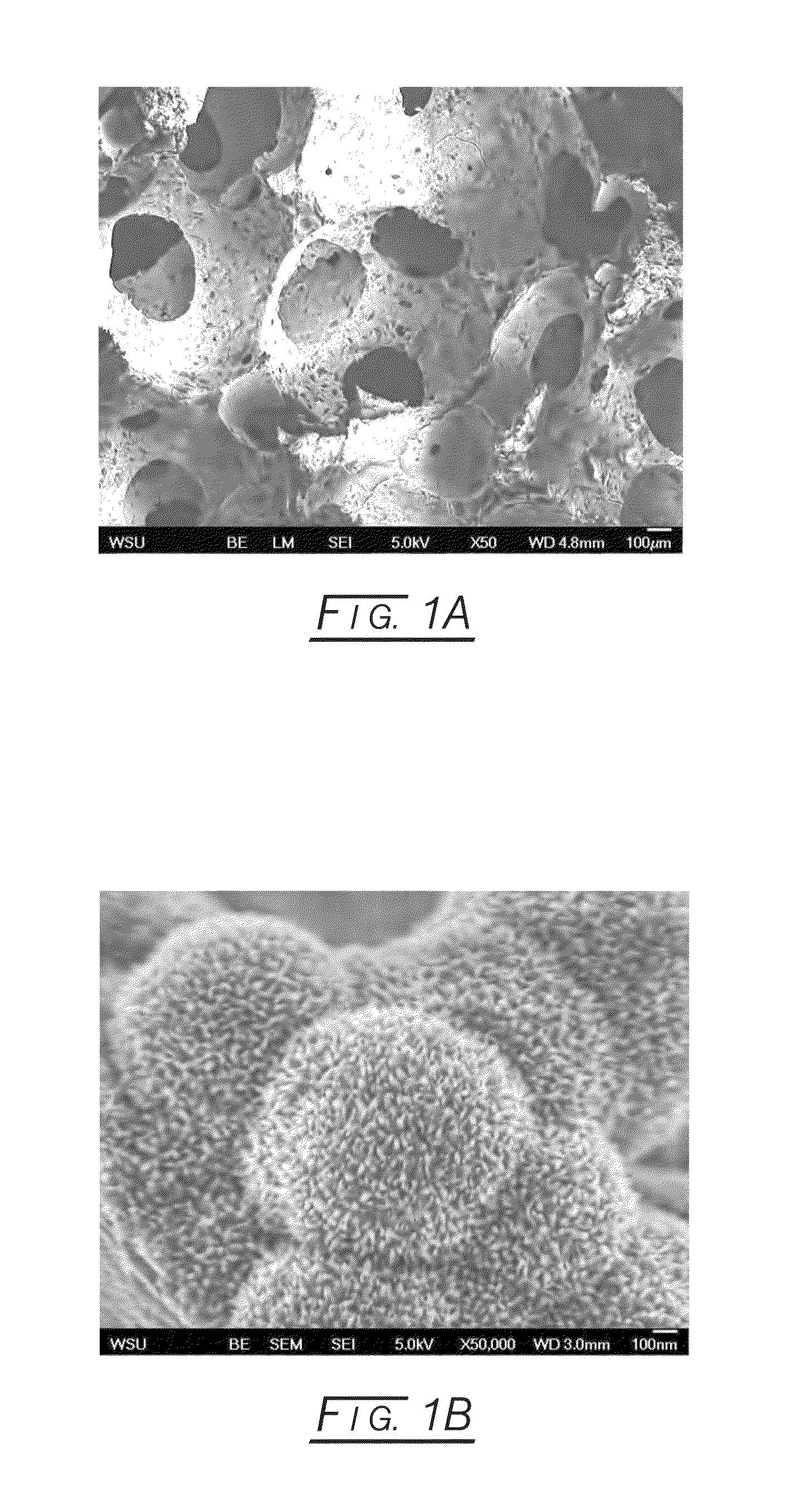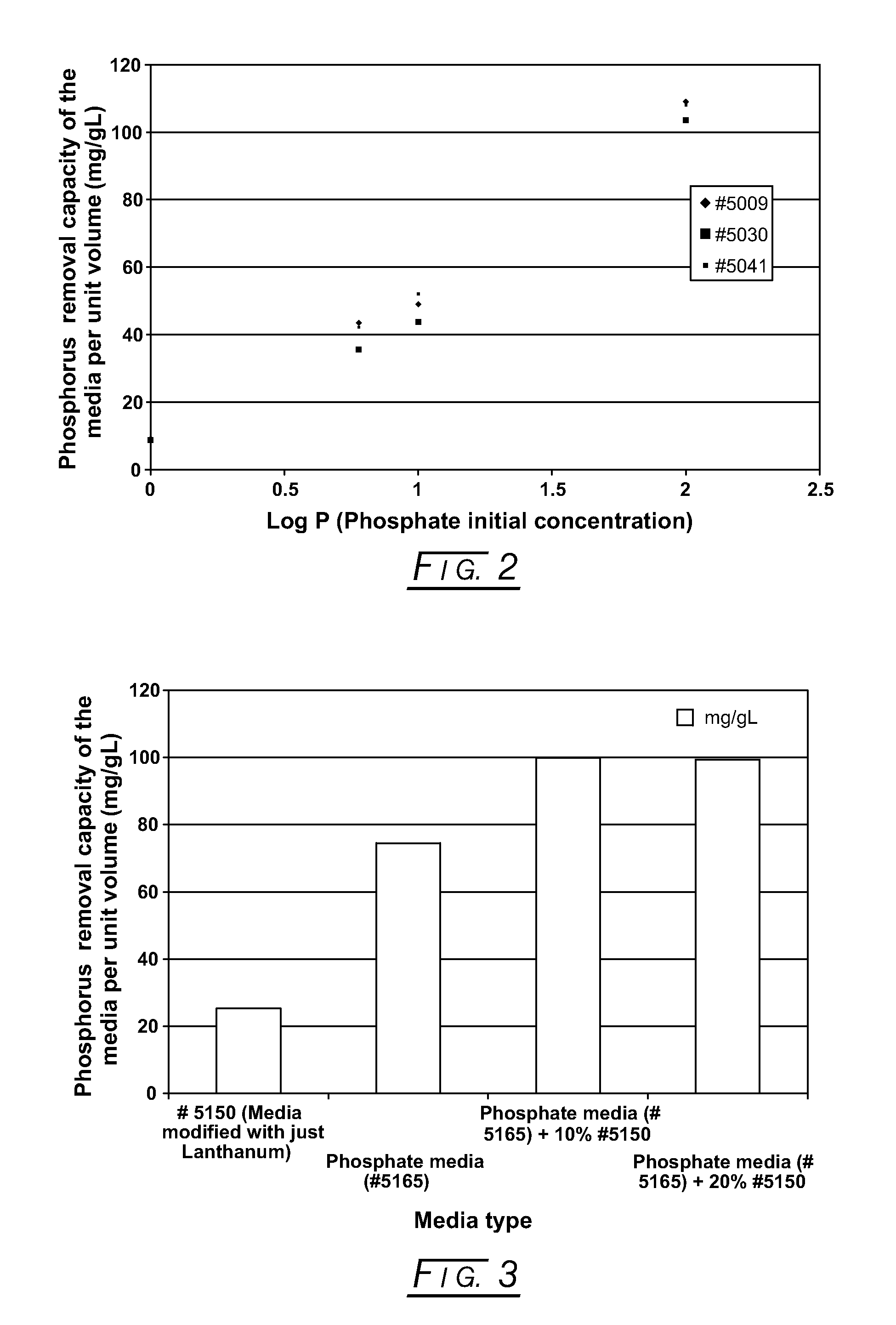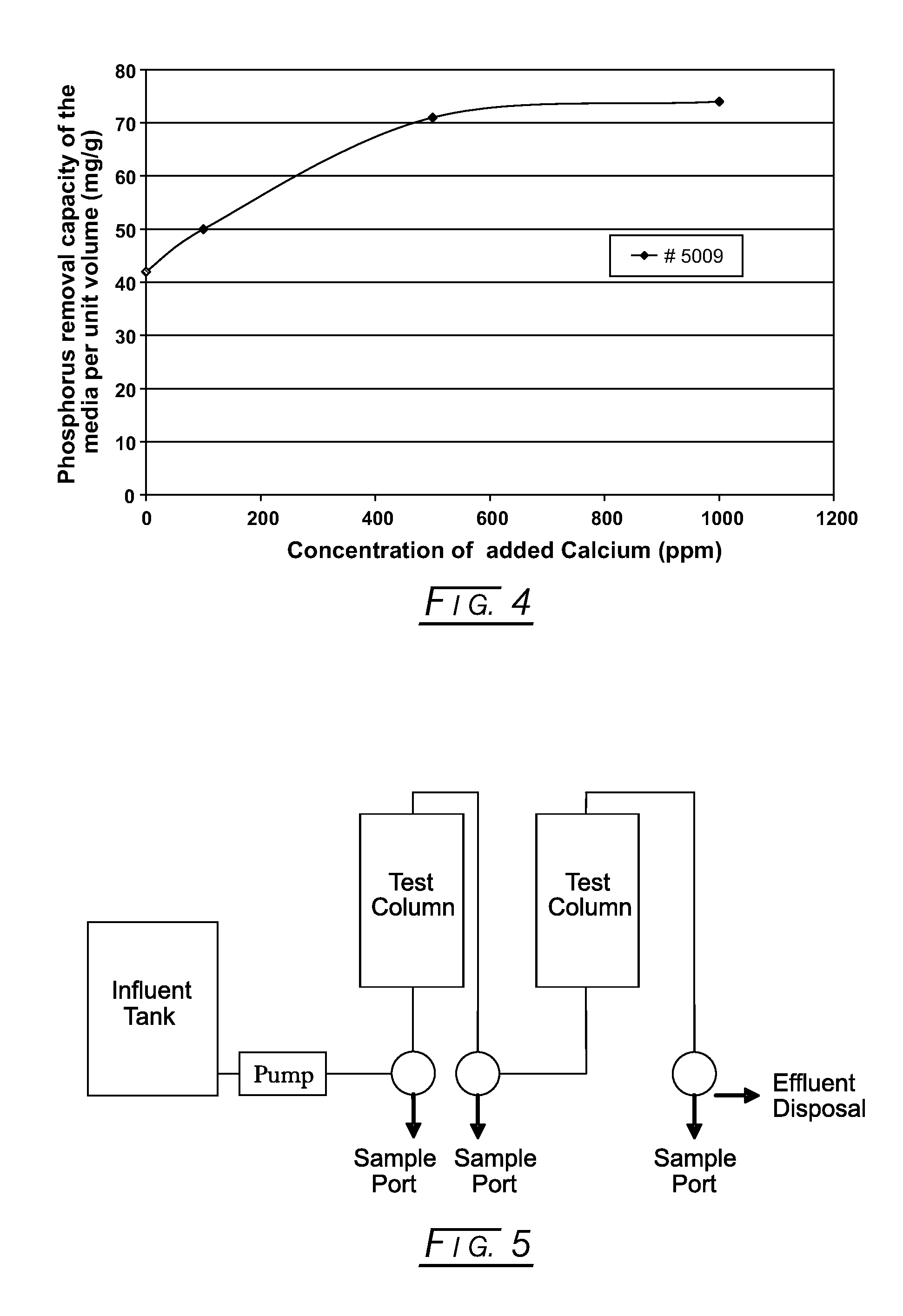Porous Composite Media for Removing Phosphorus from Water
a composite media and phosphorus technology, applied in the direction of water/sewage treatment by ion exchange, metal/metal-oxide/metal-hydroxide catalyst, silicate, etc., can solve the problems of degrading water bodies, generally less effective or cost-prohibitive, and low capacity reported, so as to increase the capacity to sorb phosphorus, the effect of increasing the phosphorous sorption capacity
- Summary
- Abstract
- Description
- Claims
- Application Information
AI Technical Summary
Benefits of technology
Problems solved by technology
Method used
Image
Examples
example 1
Preparation of Porous Substrate
[0045]To prepare porous ceramic substrates, two slurries are prepared; one containing a soluble silica source such as, sodium silicate, plus reactive silica compounds (e.g., silica fume, metakaolin, and the like), iron powder was used as an aggregate, silicone glycol copolymer surfactants and gas producing agents; while the second slurry contains a source of soluble alumina such as sodium aluminate, plus reactive silica compounds (e.g., silica fume, metakaolin, and the like), iron powders as an aggregate, and silicone glycol surfactants. Each of the two slurries was cooled to below room temperature (<20° C.) and then equal amounts of the two slurries were combined and prepared into a desired shape, using molds or pelletizing equipment. The combined slurry foams (expands) and will set into a hard product within 10-30 minutes. The blend of the two slurries can be molded in the presence of metal or polymeric reinforcement, such as, for example wires or ro...
example 2
First Method for Nano-Modification
[0047]The media of Example 1 is modified by soaking the media first in a base solution, such as TMAOH (tetramethyl ammonium hydroxide), until saturated and then media is removed and soaked in an iron precursor solution. This method was optimized by varying different parameters such as, soaking time, concentration and type of chemicals, such as iron nitrate or iron sulfate. After modification is completed, media is dried. The surface area of the media after nano material deposition is typically in the range of 50-65 m2 / g. Media made using this method has an increased rate of Phosphorous removal (using a standard 24 hour batch test) of 50-55 mg of Phosphorous per gram of media at a concentration of 10 mg / L Phosphorous in the water.
example 3
Second Method for Nano-Modification
[0048]The media of Example 1 is first treated with an oxidizing agent such as, potassium permanganate for 2-3 hours and then exposed to an iron precursor solution, in order to form iron oxyhydroxide or iron oxide by oxidation and deposition or growth of these nanomaterials onto the surface of the base porous media. After the modification is completed, the media is dried. The addition of nano-materials using this method increases the surface area of the media by the addition of this active layer for Phosphorous absorption. After one treatment cycle, the surface area increased from ˜15 m2 / gram to 55 m2 / gram (BET method) and after a second treatment cycle, surface area increased to over 70 m2 / g. Chemical analysis (ICP-inductively coupled plasma spectroscopy) of the modified media was used to estimate the amount of nano-iron added to the porous media. Tests on multiple samples showed between 8 and 10% of nano-iron (expressed as FeOOH) was added. Phosph...
PUM
| Property | Measurement | Unit |
|---|---|---|
| size | aaaaa | aaaaa |
| concentrations | aaaaa | aaaaa |
| temperature | aaaaa | aaaaa |
Abstract
Description
Claims
Application Information
 Login to View More
Login to View More - R&D
- Intellectual Property
- Life Sciences
- Materials
- Tech Scout
- Unparalleled Data Quality
- Higher Quality Content
- 60% Fewer Hallucinations
Browse by: Latest US Patents, China's latest patents, Technical Efficacy Thesaurus, Application Domain, Technology Topic, Popular Technical Reports.
© 2025 PatSnap. All rights reserved.Legal|Privacy policy|Modern Slavery Act Transparency Statement|Sitemap|About US| Contact US: help@patsnap.com



